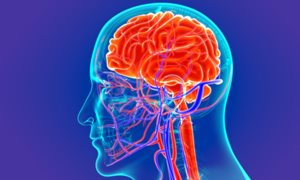 Medical diagnoses usually focus on solving individual problems. But solving one problem can lead to another problem and sometimes even complete collapse. Scientists from Wageningen University & Research (WUR) and Radboudumc have now found a way to assess the resilience of humans and animals based on data from wearable electronics.
Medical diagnoses usually focus on solving individual problems. But solving one problem can lead to another problem and sometimes even complete collapse. Scientists from Wageningen University & Research (WUR) and Radboudumc have now found a way to assess the resilience of humans and animals based on data from wearable electronics.
Dynamic indicators of resilience
Staying alive requires resilience - that is the ability to return to normal levels after disruptions ranging from a scratch to a flu or a severe fall. The resilience decreases naturally upon ageing, but is also influences by genes, lifestyle and events. Despite all the knowledge about health, measuring the essence - resilience - has proved elusive. However, new mathematical insights now make it possible to use the countless small recovery episodes (micro-recoveries) recorded by sensors to assess the resilience as a whole and thus the risk of decreased health. As mass data from fitness watches and other electronics quickly become available and common, this allows for cheap monitoring of resilience."Surprisingly, the signals we find are very similar to the signals that indicate the tipping points in ecosystems, such as rain forests," says Marten Scheffer, principal researcher WUR. "It may seem strange, but we are about to unravel the fundamental laws to which complex systems behave when they become unstable."
Tipping points
Although the concept of the body as whole system is the biggest challenge, individual system components can also collapse. The personal mood is an example. When the resilience of the mood is affected, even small stressful events can trigger a collapse leading to depression. The Dynamic Indicators of Resilience (DIORs) that have now been discovered are based on changes in the behavior of the system when such a tipping point is close. This allowed researchers to make an estimate of the risk of depression based on the pattern of fluctuations in mood, as they are reported by the patients themselves. The same principles have been shown to be indicative of the stability of other 'subsystems' of the body, such as the walking position of the elderly, which is related to the risk of a fall. The new indicators pave the way for measuring the resilience of both individuals as a whole and of various vital subsystems that are interconnected.Objective measures of resilience
The objective measurement of resilience also makes it much easier for researchers to investigate the factors that influence that resilience. "Concerns about animal health and animal welfare are making it increasingly important to understand the resilience of production animals," says co-author Bas Kemp, animal scientist at Wageningen University. "It is clear that not only genetic make-up and composition of nutrition, but also living conditions of the young animal and social relationships have an impact on health and survival. However, we do not understand how these factors interact, so that resilience can arise in animals. The objective measurement of resilience is therefore a big step forward. ""The same applies to medicine," says co-author Marcel Olde Rikkert, Professor of Clinical Geriatrics at Radboudumc. "There is a widely felt desire to see the patient again as one. Especially for the elderly where decisions about whether or not to operate, for example, require insight into the resilience of the patient, which we can better identify with the new techniques."
Related news items

Milk fat to attenuate obesity-related neurological co-morbidities
18 November 2021 The use of lipids to attenuate co-morbidities of obesity may sound paradoxical. However, it has shown to be particularly relevant in the fight against a less familiar co-morbidity of obesity, as it can induce alterations in white matter tracks, neuroinflammation and increases the risk of dementia. go to page
Early stage biomarker for Alzheimer's disease
4 November 2021 Researchers from the translational metabolic lab and department of neurology, in collaboration with researchers from University of Barcelona, set out to research a new biomarker in cerebrospinal fluid called “neuroleukin” for Alzheimer's disease. go to page
A robot for health data acquisition among older adults
1 April 2019In BMJ Quality & Safety Roel Boumans and colleagues from the department of Geriatrics showed that social robots may effectively and acceptably assist healthcare professionals by interviewing older adults on their perceived health status.
go to page
Exergaming as an effective method to engage people with dementia in physical exercise
11 January 2019 In Alzheimers Research & Therapy Esther Karssemeijer and Roy Kessels from the departments of Geriatrics and Medical Psychology showed that a 12-week exergame and aerobic training improve psychomotor speed in people with dementia. go to page

